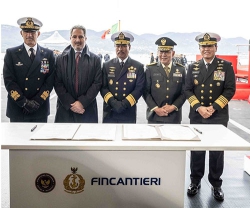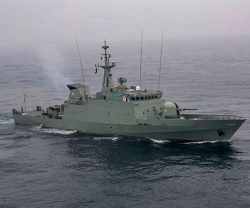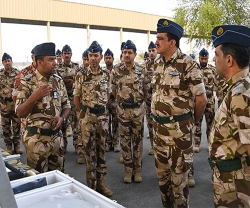Global Military Products Inc., a defense contractor based in Tampa, Florida, has been awarded a $118.4 million firm-fixed-price contract for the purchase and delivery of Gepard 35 mm air defense systems, Army Recognition reported.
The contract announcement was made on May 30 by the Army Contracting Command in Newark, New Jersey. The bidding for this contract was carried out online, and Global Military Products Inc. emerged as the sole recipient. Under the terms of the contract, the work will be carried out in Amman, Jordan, and the completion date is estimated to be May 30, 2024.
This project will significantly bolster the existing capabilities of the Jordanian Armed Forces, which currently operate 60 of these systems.
Interestingly, the funding for this acquisition comes from the Fiscal 2010 Foreign Military Sales (FMS) under the Ukraine Security Assistance Initiative. The sum of $118.4 million was obligated at the time of the contract award. This signals continued investment in strengthening international defense partnerships and enhancing global security.
The Flugabwehrkanonenpanzer Gepard (anti-aircraft-gun tank ‘Cheetah’), better known as the Flakpanzer Gepard) is an all-weather-capable self-propelled anti-aircraft gun (SPAAG) developed in the 1960s by the German company Krauss-Maffei Wegmann (KMW) in collaboration with the Swiss company Oerlikon Contraves. Fielded in the 1970s, it has been upgraded several times with the latest electronics. It has been a cornerstone of the air defense of the German Army (Bundeswehr) and a number of other NATO countries.
The Gepard is based on the chassis of the Leopard 1 tank including the complete drive unit with a 37.4-liter V10-cylinder multi-fuel engine (type: MB 838 CaM 500) with two mechanical superchargers built by MTU Aero Engines. The engine develops 610 kW at 2,200 RPM (830 PS) and consumes (depending on the surface and driving style) around 150 liters per 100 kilometers.
The two guns are 90 calibers (3.15 m (10 ft 4 in)) long, with a muzzle velocity of 1,440 m/s (4,700 ft/s) (FAPDS (Frangible Armor Piercing Discarding Sabot) rounds), giving an effective range of 5.5 km (3.4 mi). The ammunition is 35×228mm caliber (STANAG 4516). The KDA autocannon has a dual belt feed for two different ammunition types; the usual loading per gun is 320 AA rounds fed from inside the turret and 20 AP rounds fed from a small outlying storage.
Each gun has a firing rate of 550 rounds/min. The combined rate of fire is 1,100 rounds/min, which – in unlimited mode – gives a continuous fire time of 35 seconds before running out of ammunition (with 640 AA rounds for both guns). It is standard to fire bursts against air targets, 24 rounds per gun for a total of 48 in limited mode and 48 rounds per gun for a total of 96 in normal mode. The 40 armor-piercing rounds are normally fired singly with the guns alternating; they are intended for self-defense against light-armored ground targets. The cannons have a maximum effective range of approximately 4,000 meters and can engage targets at altitudes ranging from ground level up to 3,500 meters.
One of the key features of the Gepard system is its advanced fire control system, which incorporates radar and electro-optical sensors for target acquisition, tracking, and engagement. The system is capable of detecting and engaging multiple targets simultaneously, ensuring a high degree of situational awareness and effective response to airborne threats.
The Gepard system’s radar provides long-range surveillance and target acquisition capabilities, allowing it to detect and track aircraft, helicopters, unmanned aerial vehicles (UAVs), and missiles. It can also integrate with other air defense systems and command and control networks, enabling effective coordination and integration within a larger air defense network.
To enhance its effectiveness, the Gepard system can be equipped with various types of ammunition, including high-explosive incendiary rounds, armor-piercing discarding sabot rounds, and programmable airburst rounds. This ammunition versatility allows the system to engage a wide range of targets, from low-flying aircraft to small drones and even lightly armored ground targets.
The Gepard system typically requires a crew of three personnel, including a commander, gunner, and driver. The crew operates from a well-protected armored cabin, which offers good protection against small arms fire and shell fragments. (Army Recognition; Photo: Jordanian Gepard Anti-Aircraft Systems © twitter.com/gepardtatze)




















